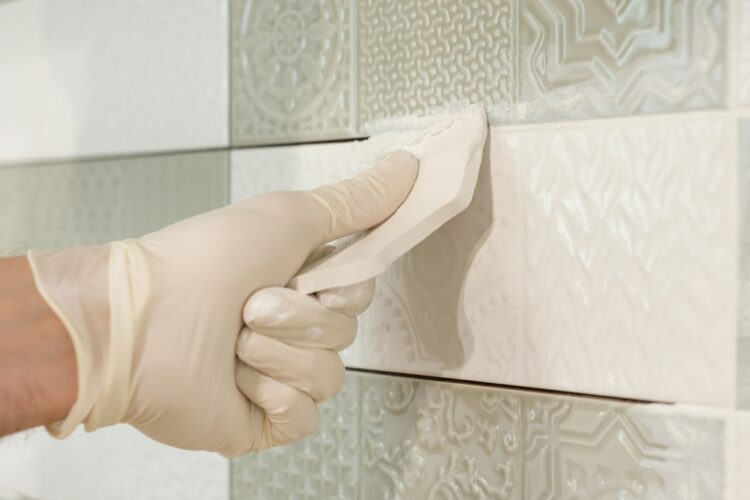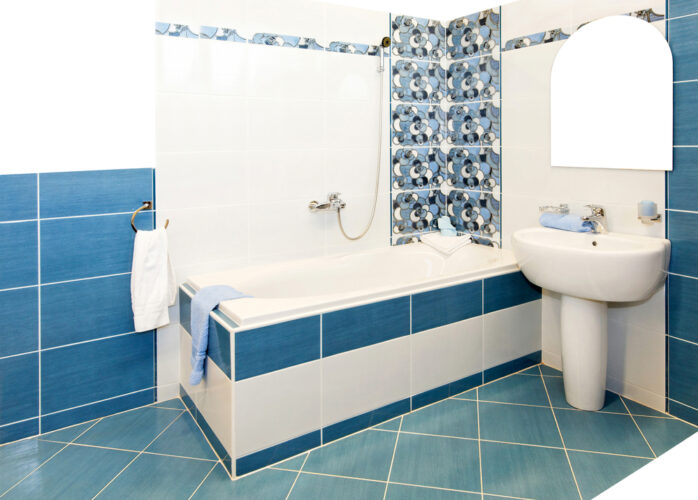Suppose you were to seal the gaps between your bathroom tiles. After hours of hard work, you see cracks in the filled gaps because of grouting. Not a very pleasant experience, is it?
Is using silicone between tiles instead of grout a better idea?
Yes! You see, silicone is a perfect sealant for the corner edges of the tiles. It’s also watertight, airtight, and flexible. Moreover, it’s a better sealant than grout and is more durable too. Finally, silicone can withstand greater pressure on the floor than grout can.
Still a bit confused about your decision? It’s fine. We’ve given an in-depth explanation of these 6 advantages of silicone. Read this article to know more!
Why Should I Use Silicone Instead of Grout

Applying silicone is more of a hassle than applying grout. You need to be precise with it. Otherwise, you won’t have a perfect finish.
You need to be immensely careful not to make a mess with silicone. Plus, it also acts as a strong sealant.
But this comes with a disadvantage. Its sealing ability traps molds within the gaps quite easily. As a result, your tiles might not look the best. Also in some cases, you have to seal the travertine before grouting. That’s an extra hassle.

However, its benefits easily outweigh the issues faced while applying. Even though it requires a bit of effort, you can seal tiles perfectly.
Advantage 1 of 6: Silicone is Suitable for Corner Edges
You see, grout is a composite material. It forms an emulsion with a mixture of water, sand, and cement. This makes it inflexible. So, grouting won’t help if your tiles have bent corners.
If your tiles are not perfectly plain, silicone has got you covered! Silicone as a sealant is flexible. So, it can handle any structural or irregular movement of tiles. Not only that, but this property also makes silicone useful to fill gaps between tile and wall too!
Advantage 2 of 6: Silicone is Water and Airtight
Silicone is advantageous to fill gaps over grout because it ensures watertight sealing. The sealing is so secure that it’s airtight as well! As a result, no bacteria can enter between the tile gaps. So, for tiles of your bathroom, the silicone would be perfect.
Do you want to seal the gaps between tiles insensitive places? Grouting is not the way to go. By ‘sensitive’ places, we mean places in contact with water. For instance, bathrooms, sinks, tiled thresholds that keep water from sipping etc.
On the other hand, grout is not usually waterproof. There is a particular kind of grout, which has latex mixed with it. Grouts mixed with latex are waterproof.
But it comes with another disadvantage. Having latex makes the grout more porous. As a result, more mold tends to grow in the grouting when filling the tile.
To fix this problem, you can use a grout sealing agent. Then again, you will need to reapply for it after every few years. So, overall, silicone should be used instead of grout for this purpose.
Advantage 3 of 6: Silicone is More Flexible
You see, the tiles will often face vibrations from time to time. Since grout is not flexible, it is bound to show cracks after a while. However, the flexible silicone will absorb all movements happening on the tiles.
The compounds that your silicone is composed of, are strongly bonded. Thus, the surface of your tiles will remain fixed.
For instance, if someone takes a bath daily, the floor tiles are bound to shift a bit. With the help of silicone, the strong bonds will hold everything together without cracking.
Instead of grouting of tiles, silicone is way better for this purpose.
Advantage 4 of 6: Silicone is a Better Sealant
Silicone is a better sealant than grout because its smooth texture is often preferred by many. Thus, for smooth joining with tiles, silicone is perfect.
What if silicone is not used instead of grout? Then, the texture of joined parts with the tiles would be rough.
Advantage 5 of 6: Silicone is More Durable
You know, there are different kinds of silicone that you can use. But depending on that, it’s possible to make them last a long time. This means, there is a special kind of silicone that is extra durable. They are known as GE silicone.
You need to apply GE silicone with a smoothing tool. This can make the sealant last up to 10 years. And of course, you’ll get permanent flexibility. Because silicone is very flexible, as we mentioned before.
For permanent positioning of tiles, try replacing grout with silicone of this kind!
Advantage 6 of 6: Silicone Withstands Greater Pressure
Grout has the biggest disadvantage of being extremely brittle. Applying little pressure may cause grout to crack. Places like bathrooms and showers create vibrations on the surface and move a lot.
These surfaces shift and your brittle grout won’t hesitate to crack. These cracks deepen once water flows through them. Finally, your grout may even wash off.
On the contrary, silicone is perfect for surfaces that tend to shift! Silicone’s flexibility will act as the perfect sealant for such surfaces.
Applying Silicone Between Tiles: A Guide

So, are you looking for ways on how to caulk between tiles using silicone? Well, the process may look like a hassle. But all you need is a bit of patience. Here are the steps to follow to apply the silicone sealant:
- Clean the gaps between the tiles where you’ll apply silicone. You can use warm, soap water to clean it. Then, leave it to dry.
- Read the instruction manual of the silicone caulk properly. After all, you need to make sure things don’t get too messy.
- After that, make a hole in the nozzle of the silicone tube. Then, load it into the gun.
- Take a masking tape and tape 3 mm above and below the tile gaps.
- Start applying the silicone sealant!
- Make sure you give constant pressure while applying it. Don’t rush. Continue applying it slowly without stopping till the end.
- After you’re done, tear off the masking tapes you placed earlier. The excess silicone on them will also come apart. And you’ll get smooth filling between tiles! Remember, pull away from the masking tape as soon as you’re done applying the silicone. If your sealant dries, it’ll be very difficult to remove the tapes.
- Wait for 24 hours and you’re done!
You’ve finally sealed your tile gap with silicone. Now give yourself a pat on the back. You deserve it, buddy!
FAQs
Question: Can silicone hold the tile?
Answer: Yes, silicon caulk is sometimes used as an adhesive. They are a great replacement for traditional adhesives used to stick tiles.
Question: Can silicone be used instead of thin-set mortar?
Answer: Yes, silicone can be used instead of thin-set. They are less messy and easier to use. So, for a fixed area, silicone caulk is ideal to work with than thin-set mortar.
Question: What is the difference between a silicone adhesive and a silicone sealant?
Answer: A silicon adhesive is a viscoelastic material like other adhesives. Since they rely on pressure sensitivity, they don’t need to be cured. On the other hand, silicone sealants need time to be dried after it is applied.
Final Words
These are the reasons why it’s preferable to use silicone between tiles instead of grout.
Just remember that silicone can be applied to bent edges. Also, it has useful properties of being airtight, watertight, and flexible. Compared to grout, it’s a much better sealant and is durable. So, you won’t see cracks within tiles.
Let us know if you did decide to use silicone for your home in the comments!
Best of luck!